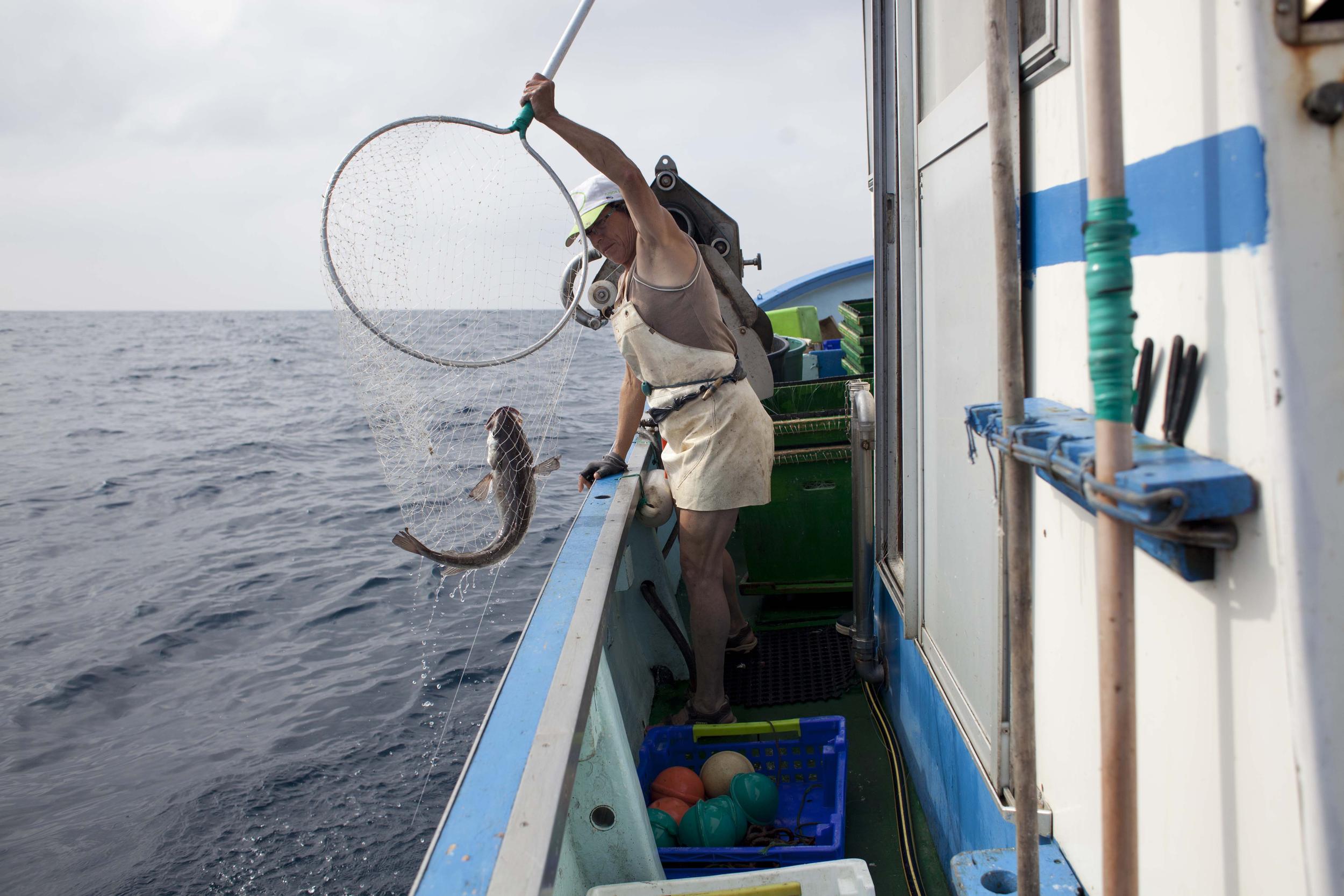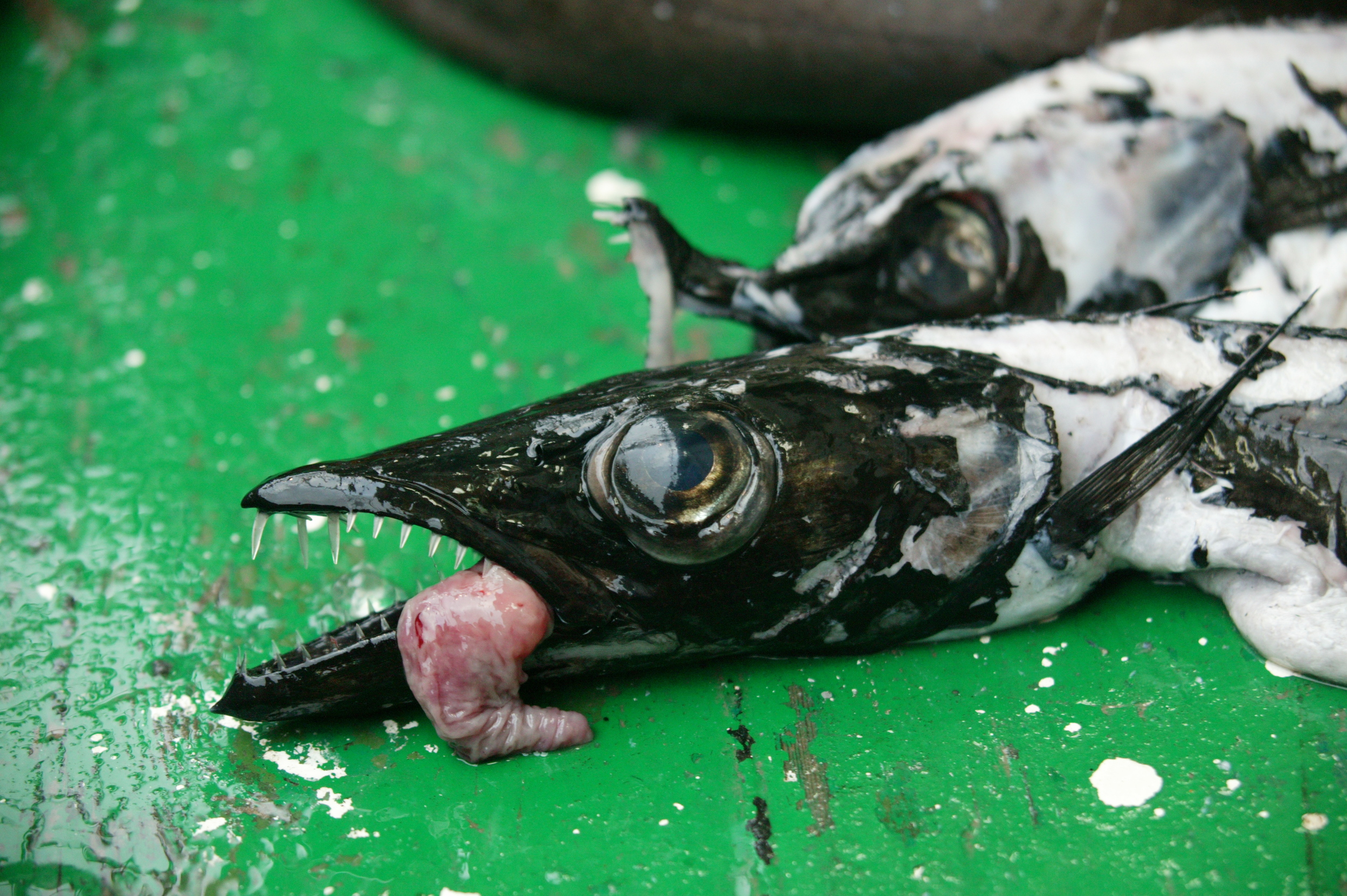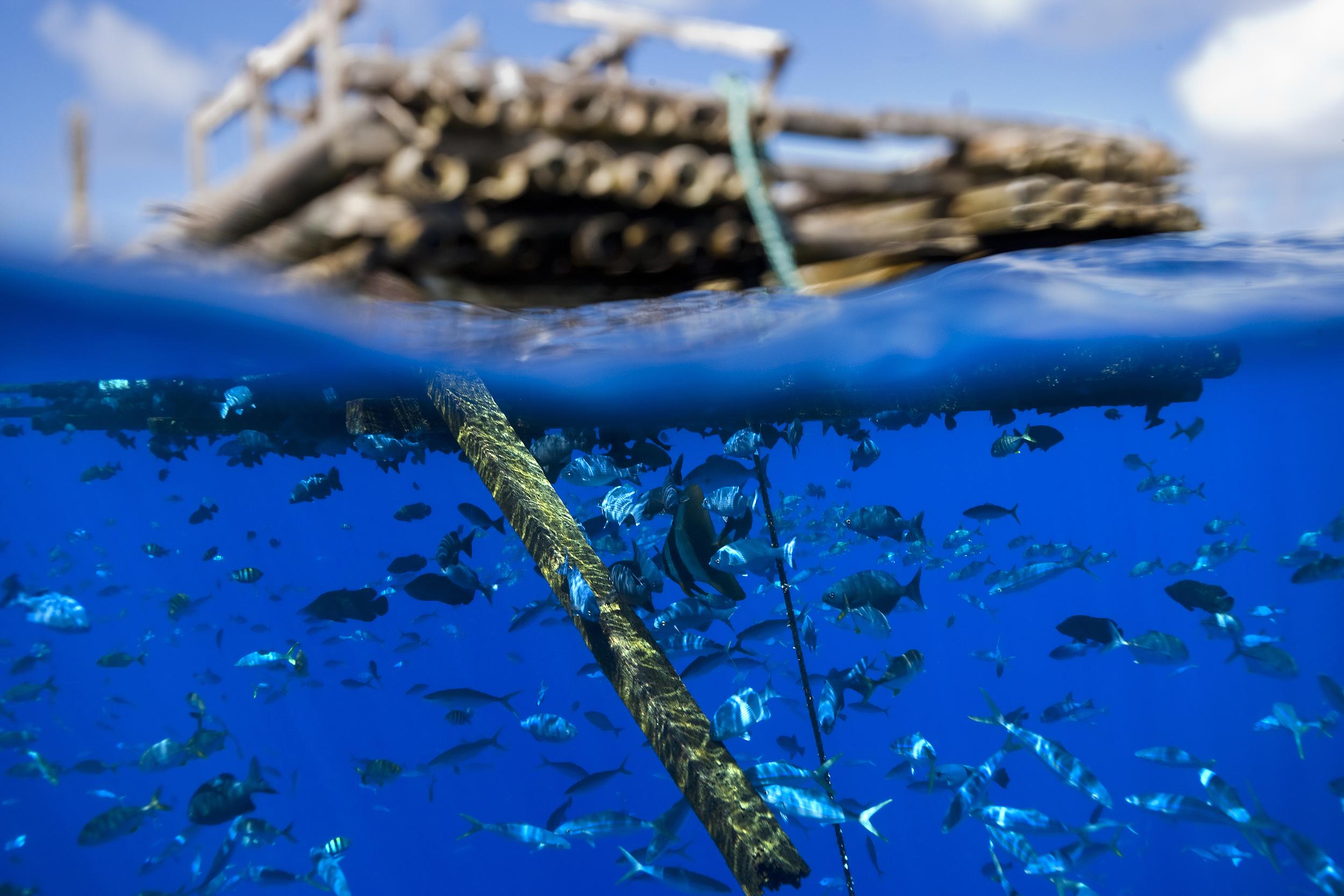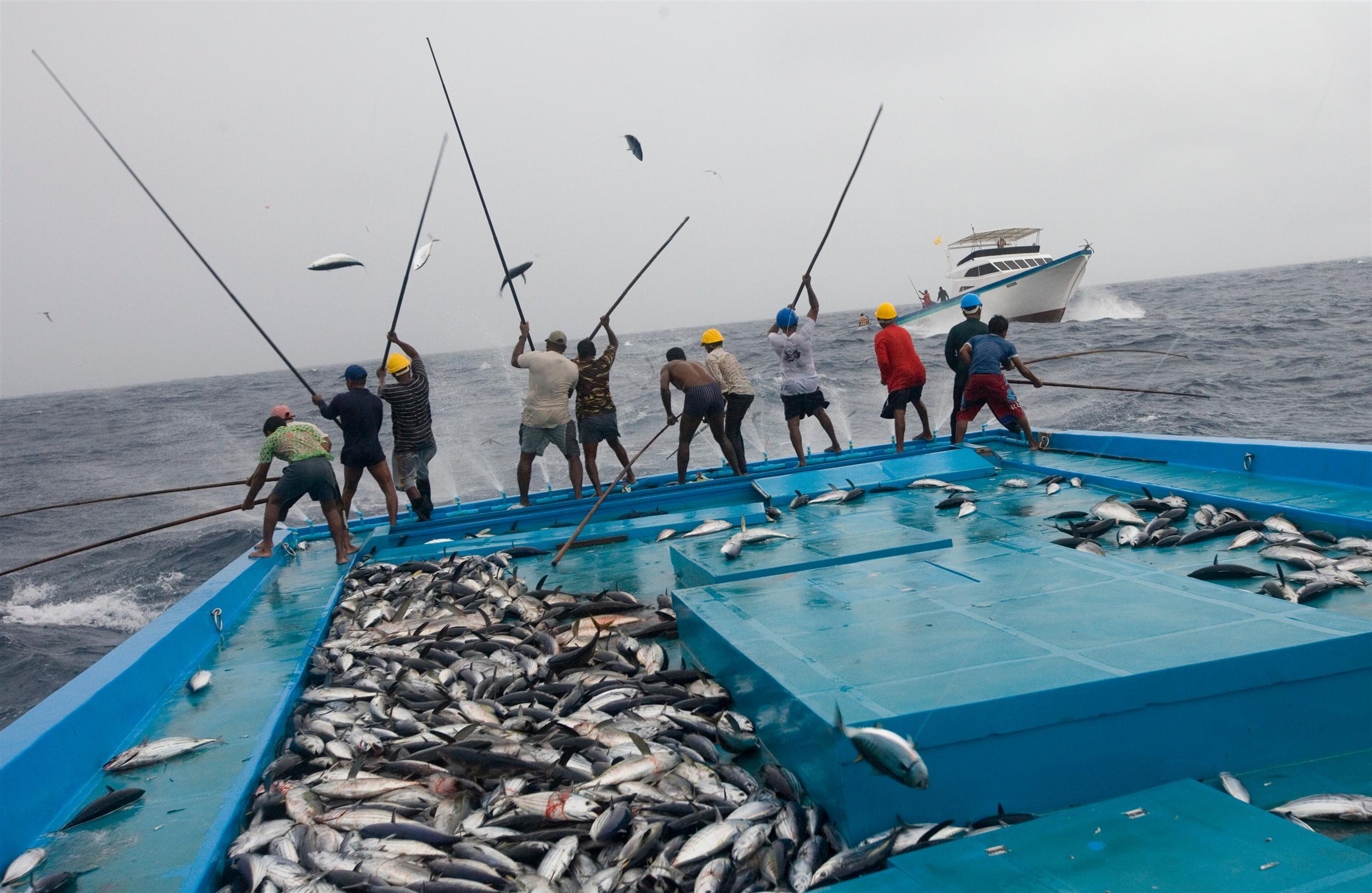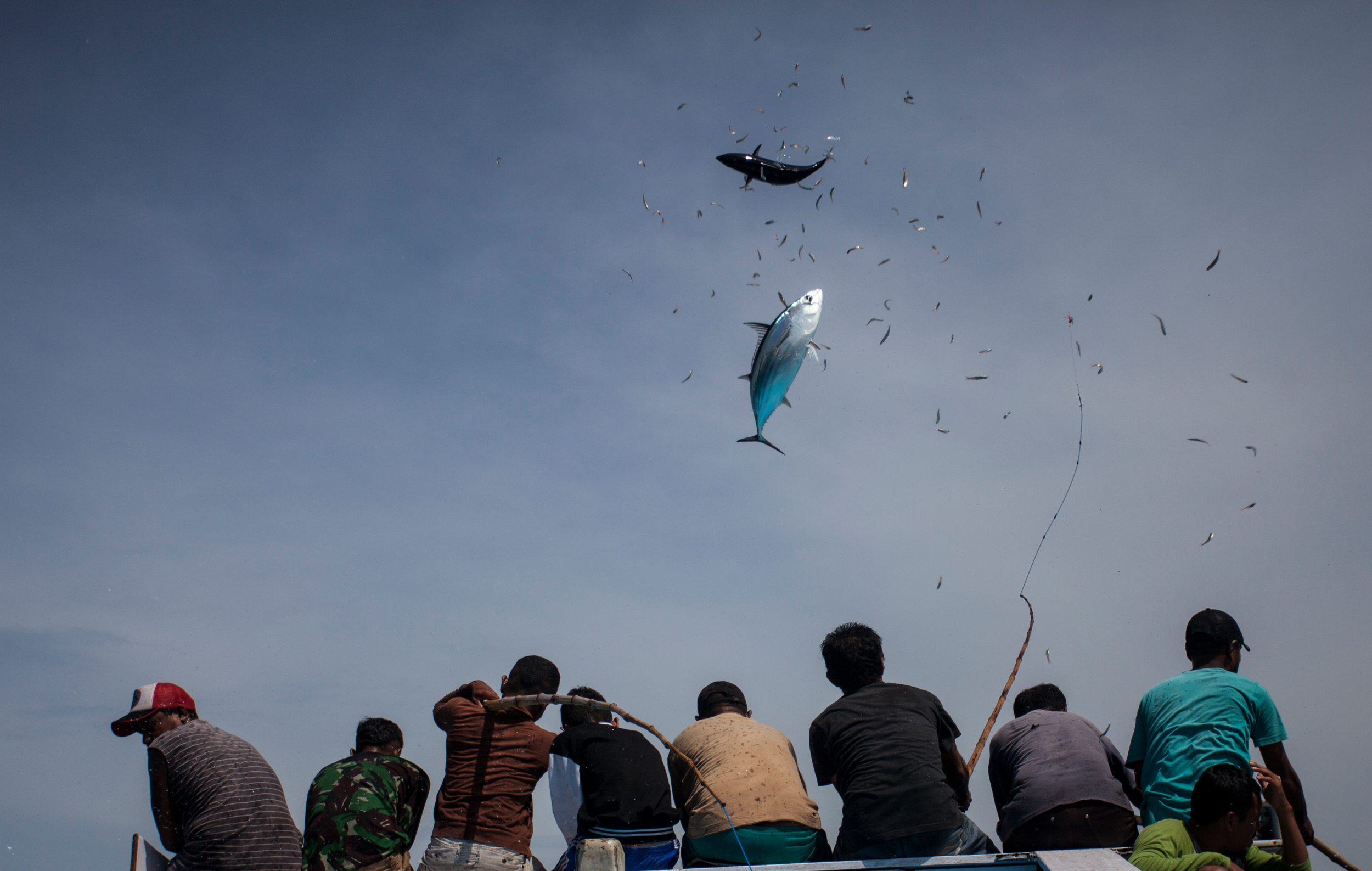Trajnostni ribolov | Greenpeace UK
Desetletja slabih ribiških praks so naše oceane pustila v tragičnem stanju. Številne vrste, ki so bile nekoč običajne, so zdaj ogrožene in se zmanjšujejo do te mere, da jih ni dovolj za ulov in ustvarjanje dobička. Ujetih je bilo že več kot 901 TP3T plenilskih vrst, kot sta trska in tun, in po podatkih ZN je 70% ribištva prelovljenih.
Število rib upada hitreje, kot se lahko razmnožujejo, kar povzroča globoke spremembe življenja v naših oceanih. V resnici v morju ni veliko več rib.
Ribiška industrija je postala visokotehnološka in velikanske ladje uporabljajo sonar za iskanje ribjih jat z izjemno natančnostjo. Ogromne mreže lovijo ogromno rib. Te ladje so tudi plavajoče tovarne z obrati za predelavo in pakiranje za učinkovitejšo obdelavo ulova. Vse to pomeni, da je zdaj mogoče ujeti veliko več rib, kot jih je dejansko ostalo.
VIR: https://www.greenpeace.org.uk/challenges/sustainable-fishing/

Izbran prilov, zavržen z globokomorske vlečne mreže „Chang Xing“ v mednarodnih vodah v Tasmanskem morju. Greenpeace skupaj z več kot tisoč znanstveniki podpira poziv k moratoriju na ribolov s pridneno vlečno mrežo na odprtem morju zaradi velike količine morskega življenja, ki je uničeno s to metodo ribolova.
Prekomerni ribolov prazni morja
Ko tradicionalne vrste izginejo, so druge vrste tarča in celo preimenovane, da bi postale privlačnejše. Na primer, patagonskega zobatca so ponovno izumili kot bolj okusno poimenovanega čilskega brancina. Flote se podajajo tudi v bolj oddaljene vode v Arktika in Južni oceane, da bi opustošili tamkajšnje populacije rib.
Metode ribolova, ki jih uporabljajo te ladje, so pogosto zelo uničujoče. Vlečne mreže s pridneno in gredno vlečno mrežo po morskem dnu lovijo ploščate ribe, kot sta oslič in morski list. Razbijajo pa tudi vse, kar se jim znajde na poti, in uničujejo krhke koralne grebene. In večina načinov ribolova je zelo nediskriminatornih, številne druge vrste lovijo po naključju. Ta prilov vključuje želve, morske pse, delfine in druge ribe, ki jih mrtve ali umirajoče pogosto vržejo nazaj v morje.
Obstaja tudi človeška cena. Industrijski ribolov pomeni, da trpijo mali ribiči, ki uporabljajo bolj tradicionalne metode. V Združenem kraljestvu manjše ladje težko zaslužijo dovolj denarja, skupnosti v številnih ribiških pristaniščih pa so ekonomsko prikrajšane. Tudi število ribičev se je v zadnjih 20 letih prepolovilo. Drugod po svetu ljudje, ki so odvisni od rib za hrano in dohodek, vidijo, da njihovi staleži izginjajo, ko tuja plovila vlečejo v njihove vode.
Nepravične ribolovne kvote
Veliko vlogo pri tem igra način, kako vlada Združenega kraljestva dodeljuje ribolovne kvote. Kvote so postale koncentrirane v rokah majhnega števila večmilijonskih podjetij. Samo pet družin nadzoruje skoraj tretjino ribolovnih kvot Združenega kraljestva in več kot dve tretjini ribolovnih kvot nadzoruje le 25 podjetij. V primerjavi z manjšimi ribolovnimi operacijami ta velika podjetja zaposlujejo manj ljudi, uporabljajo manj trajnostne metode ribolova in manj denarja pride v lokalna gospodarstva.
Naša vlada že ima moč spremeniti način razdeljevanja kvot. Greenpeace se zavzema za pravičnejši sistem dodeljevanja, ki daje prednost lokalnemu, trajnostnemu ribolovu, kar bo pripomoglo k ustvarjanju delovnih mest in omogočilo obnovitev ribjih staležev.
Prav tako se spopadamo s podjetniškimi velikani, ki plenijo naše oceane. Thai Union, največje podjetje za tune na svetu in lastnik Johna Westa, si je zatiskalo oči pred grozljivimi pogoji za delavce in uničujočimi ribolovnimi praksami. Toda nato je negodovanje tisočev ljudi po vsem svetu prisililo Thai Union, da je očistilo svoje poslovanje.
Ustvariti moramo več zaščitenih območij na morju. Mreža oceanska svetišča bo nudil zatočišča za ribe in drugo morsko življenje, da bodo uspevali stran od grožnje industrijskih ribiških flot. z sprememba podnebja ustvarjanje drugih groženj našim oceanom, jim moramo ponuditi vso možno pomoč.
Na slikah: Trajnostni ribolov

Indonezijski član posadke prikazuje želvo, ujeto na koncu vrvi za vabe korejskega plovila s parangali "Shin Yung 51". Lokacija je znotraj izključne ekonomske cone Republike Kiribati. Morski psi, želve, delfini in albatrosi se lahko pogosto končajo kot neposrečen prilov pri ribolovu s parangalom. Greenpeace je na pacifiškem delu globalne odprave 'Branimo naše oceane'. Pozivajo k takojšnjemu prenehanju piratskega ribolova, zmanjšanju količine ulova pacifiškega tuna za 50% in globalni mreži morskih rezervatov. Staleži rumenoplavutega in velikega tuna v osrednjem in zahodnem Tihem oceanu bodo v treh letih obsojeni na kritično prekomerni ribolov, če se bo neusmiljen ribolov obeh vrst tunov nadaljeval s trenutnimi stopnjami. © Greenpeace / Alex Hofford

Progasti delfin, ujet v francosko visečo mrežo ob Azorih, severni Atlantik. © Greenpeace / Peter Rowlands

Francoska obrtna ribiča ujame osliča z mrežo. © Lagazeta / Greenpeace

Vietnamski član posadke izpusti morskega psa nazaj v ocean, ki se je ujel na koncu vrvi za vabe korejskega plovila s parangali 'Shin Yung 51'. med lovljenjem tune. Lokacija je znotraj izključne ekonomske cone Republike Kiribati. Morski psi, želve, delfini in albatrosi se lahko pogosto končajo kot neposrečen prilov pri ribolovu s parangalom. Staleži rumenoplavutega in velikega tuna v osrednjem in zahodnem Tihem oceanu so zdaj drastično nizki zaradi piratskega ribolova in prekomernega ribolova staležev s strani tujih industrijskih držav. Lokalni ribiči težko konkurirajo v teh vodah, saj jim sofisticirana ribiška oprema onemogoča posel. Greenpeace poziva k takojšnjemu prenehanju piratskega ribolova, zmanjšanju količine ulova pacifiškega tuna za 50% in globalni mreži morskih rezervatov za reševanje problema prekomernega ribolova. © Greenpeace / Alex Hofford

Izbran prilov, zavržen z globokomorske vlečne mreže „Chang Xing“ v mednarodnih vodah v Tasmanskem morju. Greenpeace skupaj z več kot tisoč znanstveniki podpira poziv k moratoriju na ribolov s pridneno vlečno mrežo na odprtem morju zaradi velike količine morskega življenja, ki je uničeno s to metodo ribolova. © Greenpeace / Roger Grace

Tururuko, vodja lokalnih ribičev, vsak dan usmerja posadko med ribolovnimi aktivnostmi v Pembi, Quirimbas, severni Mozambik. © Francisco Rivotti

Ekipa z ladje Greenpeace MV Esperanza dokumentira zavržen prilov na krovu plovila s pridneno vlečno mrežo Ivan Nores pod špansko zastavo na območju Hatton Bank v severnem Atlantiku, 410 milj severozahodno od Irske. Čolni za ribolov s pridneno vlečno mrežo, večinoma iz držav EU, vlečejo več ton težko ribolovno orodje po morskem dnu, s čimer uničujejo morske prostoživeče živali in življenje na podvodnih gorah – ali „podvodnih gorah“. © Greenpeace / Kate Davison

Ribje jate krožijo okoli naprave za zbiranje rib (FAD) v zahodnem Tihem oceanu. Približno 101 TP3T ulova, ustvarjenega z ribolovom FAD z zaporno plavarico, je neželeni prilov in vključuje ogrožene vrste morskih psov in želv. Ulov velikih količin nedoraslih veleokih in rumenoplavutih tunov v teh ribolovih zdaj ogroža preživetje teh komercialno dragocenih vrst. Greenpeace poziva k popolni prepovedi uporabe naprav za zbiranje rib pri lovu z zaporno plavarico in k vzpostavitvi globalne mreže morskih rezervatov. © Paul Hilton / Greenpeace

Shamus Nicholls na svojem čolnu "Little Lauren", ki lovi basa z ročko. Je eden izmed ribičev, ki podpira trajnostni ribolov v malih plovilih. © David Sandison / Greenpeace

Ribiči lovijo črtastega tuna s palico in vrvico. Ribolov s palico in ribiško palico je selektiven in zato bolj trajnosten način ulova tuna, saj se ujamejo samo ribe določene velikosti, mladice pa pustijo, da zrastejo do starosti za drstenje in v prihodnosti obnovijo stalež. Majhne ribe vabe vržejo čez bok čolna, da zvabijo tuno na vodno gladino. Ribiči uporabljajo pospešek rib, ko tekmujejo, da bi dobili svoj plen, ga zataknili in vrgli na ravno palubo ladje. © Greenpeace / Paul Hilton

Španski Albatun Tres je dolg 115 m in je največje plovilo za ribolov tunov z zaporno plavarico na svetu. Plovila, kot je to, potujejo od ene naprave za zbiranje rib (FAD) do druge in razprejo svoje ogromne mreže, da ujamejo vse, kar plava okoli FAD. Približno 101 TP3T ulova, ustvarjenega z ribolovom FAD z zaporno plavarico, je neželeni prilov in vključuje ogrožene vrste morskih psov in želv. Ulov velikih količin nedoraslih veleokih in rumenoplavutih tunov v teh ribolovih zdaj ogroža preživetje teh komercialno dragocenih vrst. Greenpeace poziva k popolni prepovedi uporabe naprav za zbiranje rib pri lovu z zaporno plavarico in k vzpostavitvi globalne mreže morskih rezervatov. © Paul Hilton / Greenpeace

Ribiči črtastega tuna potegnejo na čoln v morju Flores, vzhodna Nusa Tenggara. Ribiči v Larantuki so znani po uporabi trajnostnih metod, palic in vrvi, pri lovu na tune. Ribolov s palico in vrvico je tradicionalna metoda ribolova, ki se ni spremenila že več generacij in jo pogosto uporabljajo lokalni ribiči v obalnih skupnostih, pri čemer uporabljajo živo vabo, cilji ribolova pa so jata skakača na površini. © Jurnasyanto Sukarno / Greenpeace
VIR: https://www.greenpeace.org.uk/challenges/sustainable-fishing/



